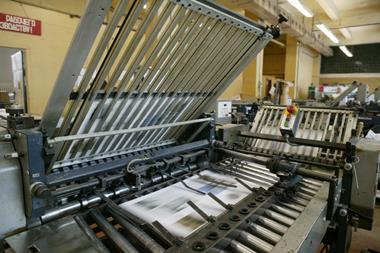The five largest pension funds in the Netherlands saw weak returns in 2015, with large deviations between listed and unlisted asset classes.
With a 2.7% return on investments, the €351bn civil service scheme ABP was the best performing scheme, whereas the €161bn healthcare pension fund PFZW generated a loss of 0.1%.
However, property, infrastructure and other alternative asset classes delivered strong results. In contrast, commodities showed dramatic losses on the back of plummeting oil prices.
The country’s five largest schemes also incurred lossed on their extensive interest and currency hedge.
ABP reported returns of 16.9% from property and 13% on infrastructure, with private equity and hedge funds producing 24.8% and 13%, respectively.
However, it said its commodities portfolio lost 20%, while suffering losses of 3.5% and 0.5% respectively due to its currency and interest rate hedges.
ABP’s 33.7% fixed income portfolio returned 3.2%, with long-term government bonds, credit and emerging markets debt delivering 2.3%, 5.8% and 3.2% respectively.
Its annual return on equity of developed and emerging markets was 11.7% and -4.7% respectively. However, during the last quarter, these equity returns were 8.1% and 4.4%.
ABP said its overall result during the fourth quarter was 1.9%.
Healthcare scheme PFZW also reported excellent results on property (14.9%), infrastructure (20.7%) and private equity (20.8%).
It added that equity had generated 7.9% during 2015, whereas government bonds and inflation-linked bonds had delivered no more than 0.4% and 0.2%.
PFZW’s credit portfolio yielded 2.6% and its allocation to structured credits – the insurance of banks’ loan portfolios – produced an 18.1% result.
Its relatively good fourth quarter result of 1.1% could not prevent an annual loss of 0.1% at PFZW, which it attributed in part to a loss of no less than 40.4% on its 4% commodities holdings.
PFZW’s combined hedge of interest and currency risk incurred a 4.8% loss, it added.
Jan Willem van Oostveen, the scheme’s investment manager, attributed the negative result to the appreciation of both the US dollar and the Japanese yen relative to the euro. He said that 70% of the risk on both currencies had been hedged.
Van Oostveen said that PFZW had ceased investing in hedge funds last year, “because of relatively high costs, undesired environmental effects as well as that the asset class insufficiently contributed to the pension fund’s overall return”.
He added that the same went for its investments in food and metal derivatives.
The €60bn metal scheme PMT, the €48bn pension fund for the building sector BpfBOUW and €40bn metal scheme PME reported annual results of 2.3%, 1% and 1% respectively.
PME said its property had generated 12.6%, whereas PMT reported “above average” results of 13.2% on real estate.












No comments yet